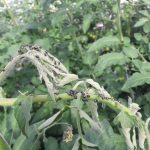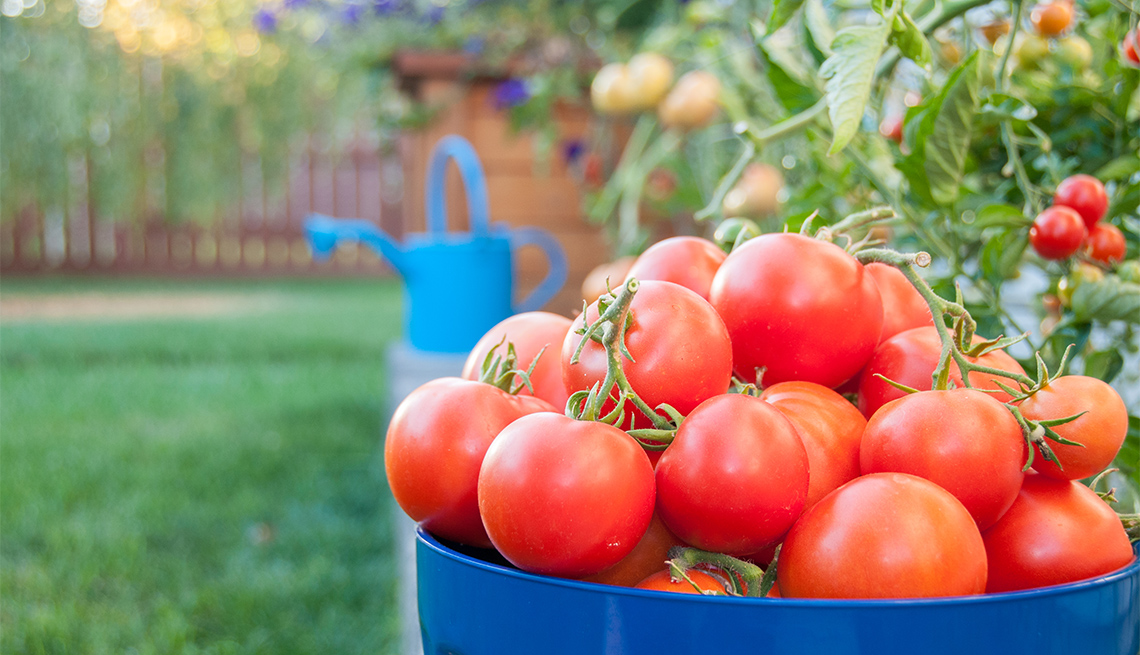When choosing tomato varieties for your garden, consider factors such as size, taste, and disease resistance. Consider the space available, growth habit, and days to maturity.
Additionally, think about whether a hybrid or heirloom variety is suitable. The best tomato for your garden depends on your preferences and the specific conditions in your area. If you’re a beginner, consider starting with an easy-to-grow variety like cherry tomatoes.
Ultimately, the best tomato variety for your garden is one that suits your taste, space, and growing conditions. By carefully considering these factors, you can select the perfect tomatoes for a successful garden.
Factors To Consider
When selecting tomato varieties for your garden, it’s important to consider various factors that can affect their growth and produce. The following factors should be taken into account when deciding on the best tomato varieties for your garden:
Climate And Location
The climate and location of your garden play a crucial role in selecting the right tomato varieties. Certain tomatoes thrive in warm climates, while others are better suited for cooler regions. Consider the temperature, humidity, and sunlight exposure in your area when choosing tomato varieties.
Plant Size And Growth Habit
Different tomato varieties have varying growth habits and plant sizes. Determinate varieties are more compact, making them suitable for smaller gardens, while indeterminate varieties have sprawling growth and require more space. Consider the available space and the support structures, such as cages or stakes, when choosing tomato varieties
Disease Resistance
Choosing disease-resistant tomato varieties can help prevent common tomato diseases such as blight and wilt. Look for varieties labeled as resistant to specific diseases prevalent in your area to ensure a healthy and thriving tomato crop.
Culinary Preference
Your culinary preferences should also guide your choice of tomato varieties. Different varieties offer unique flavors, textures, and uses. Whether you prefer tomatoes for slicing, making sauces, or enjoying as cherry tomatoes, consider the culinary purpose of the tomatoes when making your selection.
Time To Maturity
The time to maturity varies among tomato varieties, and it’s essential to select varieties that align with your gardening schedule. Some varieties produce early yields, while others require a longer growing season. Consider the time to maturity based on your local climate and growing season length.
Determinate Vs Indeterminate Tomatoes
When planning your tomato garden, understanding the difference between determinate and indeterminate tomatoes is crucial. Each type has distinct growth characteristics, suitability for container gardening, harvest periods, and pruning and maintenance needs. Knowing these variations can help you choose the best tomato varieties for your garden.
Growth Characteristics
Determinate tomatoes, also known as bush tomatoes, grow to a certain height and set fruit within a specific period. They are ideal for compact spaces and do not require extensive staking or pruning. In contrast, indeterminate tomatoes continue to grow and produce fruit throughout the growing season. They require sturdy support structures and regular pruning to manage their vigorous growth.
Suitability For Container Gardening
Determinate tomatoes are well-suited for container gardening due to their compact size and limited growth. They can thrive in smaller pots and are easier to manage in confined spaces. On the other hand, indeterminate tomatoes are best grown in large containers with strong supports to accommodate their continuous growth and prolific fruiting.
Harvest Periods
Determinate tomatoes have a concentrated harvest period, making them an excellent choice for gardeners looking to preserve a large quantity of tomatoes at once. This characteristic is beneficial for canning and processing. Indeterminate tomatoes provide a prolonged harvest period, yielding a steady supply of ripe tomatoes throughout the season, ideal for fresh consumption.
Pruning And Maintenance
Pruning determinate tomatoes is minimal, as they naturally stop growing after reaching a certain height. Regular maintenance involves simple tasks such as removing suckers and diseased foliage. In contrast, indeterminate tomatoes require consistent pruning to encourage fruit development and ensure proper airflow. This ongoing maintenance helps manage their vigorous growth and promotes healthier plants.
Considering these factors, you can select the appropriate tomato varieties based on your gardening preferences and available space.
Popular Tomato Varieties
When it comes to choosing the best tomato varieties for your garden, it’s essential to consider the specific attributes and flavor profiles of different types. With a multitude of tomato varieties available, it can be overwhelming to decide which ones to plant. Understanding the characteristics of each type of tomato and their suitability for different culinary applications will help you make the best selection for your garden.
Slicing Tomatoes
Slicing tomatoes are a staple in most gardens, valued for their juicy texture and rich flavor. Varieties such as Beefsteak and Brandywine are renowned for their large, meaty fruits, making them perfect for slicing onto sandwiches or incorporating into fresh salads.
Cherry Tomatoes
Cherry tomatoes are beloved for their sweet, bite-sized fruits that are ideal for snacking, adding to pasta dishes, or roasting for a burst of flavor. Popular varieties like Sungold and Sweet 100 offer an abundance of small, vibrant tomatoes perfect for fresh eating.
Roma Tomatoes
Roma tomatoes, also known as plum tomatoes, are prized for their dense, meaty texture and low moisture content. These tomatoes are well-suited for making sauces, pastes, and canning due to their minimal seed content and intense flavor. Varieties like San Marzano and Amish Paste are known for their exceptional performance in the kitchen.
Heirloom Tomatoes
Heirloom tomatoes encompass a wide range of unique and traditional varieties that have been passed down through generations for their exceptional flavor, appearance, and historical significance. From the rich, complex taste of Cherokee Purple to the vibrant colors of Brandywine, heirloom tomatoes offer a diverse array of options for gardeners seeking distinctive and flavorful fruits.
Specialty Varieties
In addition to the traditional types, there are numerous specialty varieties that provide a range of flavors, shapes, and colors. Whether it’s the compact growth habit of Patio Princess or the striking striped appearance of Green Zebra, these specialty tomatoes offer exciting alternatives for gardeners looking to diversify their harvest.
Tips For Selecting The Best
Selecting the best tomato varieties for your garden involves careful consideration and research. To ensure a successful and bountiful harvest, take into account several key factors when choosing the right tomatoes for your gardening needs.
Research And Recommendations
Before selecting your tomato varieties, perform thorough research and seek out recommendations from experienced gardeners and reputable gardening resources. Look for information on the best tomato varieties that thrive in your specific climate and growing conditions. Consider factors such as disease resistance, yield, and flavor profiles to make informed decisions about which varieties will best suit your garden.
Seed Sources And Suppliers
When selecting tomato varieties, it is essential to source high-quality seeds from reliable suppliers. Look for reputable seed companies or nurseries that offer a diverse selection of tomato cultivars. Ensure that the seeds you purchase are certified and well-suited for your local climate, as this can greatly affect the success of your tomato plants.
Personalized Garden Goals
Take into account your personalized garden goals when choosing tomato varieties. Consider factors such as space limitations, desired harvest times, and intended culinary uses of the tomatoes. By aligning your tomato selection with your specific garden objectives, you can maximize the productivity and enjoyment of your gardening experience.
Tasting Events And Trials
Participating in tasting events and trials can provide valuable insights into the flavor and performance of different tomato varieties. Attend local tastings or conduct your own trials to sample and evaluate a diverse range of tomatoes. By doing so, you can make informed decisions based on first-hand experiences and preferences, ensuring that the chosen varieties meet your taste and culinary requirements.
Tomato Selection Guide
Introductory paragraph about the ‘Tomato Selection Guide’Tomatoes are a staple in many home gardens due to their versatility and abundant varieties. When it comes to selecting the best tomato plants for your garden, it’s important to consider several factors that will contribute to the overall success of your harvest. We have put together a comprehensive guide to help you choose the best tomato varieties, focusing on appearance and texture, fragrance and aroma, weight and firmness, and working with your senses. Examining these factors will enable you to make an informed decision and ensure that you select the most suitable tomato plants for your gardening needs.
H3: Appearance and TextureAppearance And Texture
Unordered list- Consider the shape, size, and color of tomatoes.
- Choose tomatoes with smooth, unblemished skin for optimal appearance and texture.
- Texture should be firm and free of any soft spots.
Fragrance And Aroma
Unordered list- Opt for tomatoes with a strong, pleasant aroma near the stem area.
- Fragrant tomatoes often indicate ripeness and flavor.
- Take a moment to smell the tomatoes to ensure a rich, enticing aroma.
Weight And Firmness
Unordered list- Pick tomatoes that feel heavy for their size, indicating juiciness and ripeness.
- Ensure the tomatoes are firm yet yield to gentle pressure.
- Heavy and firm tomatoes are typically a sign of quality and delicious flavor.
Working With Your Senses
Unordered list- Engage your senses by observing the appearance, smelling the fragrance, and feeling the weight and firmness of the tomatoes.
- Use your senses to gauge the overall quality and ripeness of the tomatoes, ensuring a delightful culinary experience.
- By utilizing your senses, you can make informed decisions and select the best tomato varieties for your garden.
:max_bytes(150000):strip_icc()/tomato-varieties-lead-getty-0723-bf48892cf3764ff79a0046180c592006.jpg)
Credit: www.marthastewart.com
Frequently Asked Questions On How To Choose The Best Tomato Varieties For Your Garden
How Do You Pick A Good Tomato?
To pick a good tomato, avoid blemished ones. Choose tomatoes that are heavy for their size, firm but slightly soft, and aromatic near the stem.
What Are The Best Homegrown Tomato Varieties?
Some best homegrown tomato varieties include Beefsteak, Roma, Brandywine, and Cherry tomatoes. These varieties offer different sizes and flavors.
What Are The Best Tomatoes For Vegetable Garden?
The best tomatoes for a vegetable garden are Beefsteak, Rutgers, Brandywine, and Roma for their taste and texture. For beginners, cherry tomatoes are easy to grow. When choosing, opt for disease-resistant, determinate or indeterminate, with good space, and a flavor that you prefer.
What Is The Easiest Variety Of Tomato To Grow?
Cherry tomatoes are the easiest variety to grow due to their compact size and resilient nature.
Conclusion
In choosing the best tomato varieties for your garden, consider factors like the space available, climate, and intended use. Whether you prefer heirloom or hybrid, determinate or indeterminate types, your selection should match your needs. Remember to prioritize disease resistance and flavor to enjoy a fruitful harvest.
Happy gardening!

I am a graduate of Bangladesh Agricultural University, where I delved into various agricultural disciplines, equipping me with a profound understanding of agriculture. Beyond academics, I have hands-on experience in gardening and crop cultivation. My passion is to embrace sustainable farming and horticulture. With a BSc in Agriculture, I am dedicated to promoting environmentally conscious and efficient agrarian practices.
Bachelor of Science (BSc) in Agriculture (Hons.)
Master of Science. (Sustainable Agriculture & Food Security ) (MS)
Bangladesh Agricultural University




